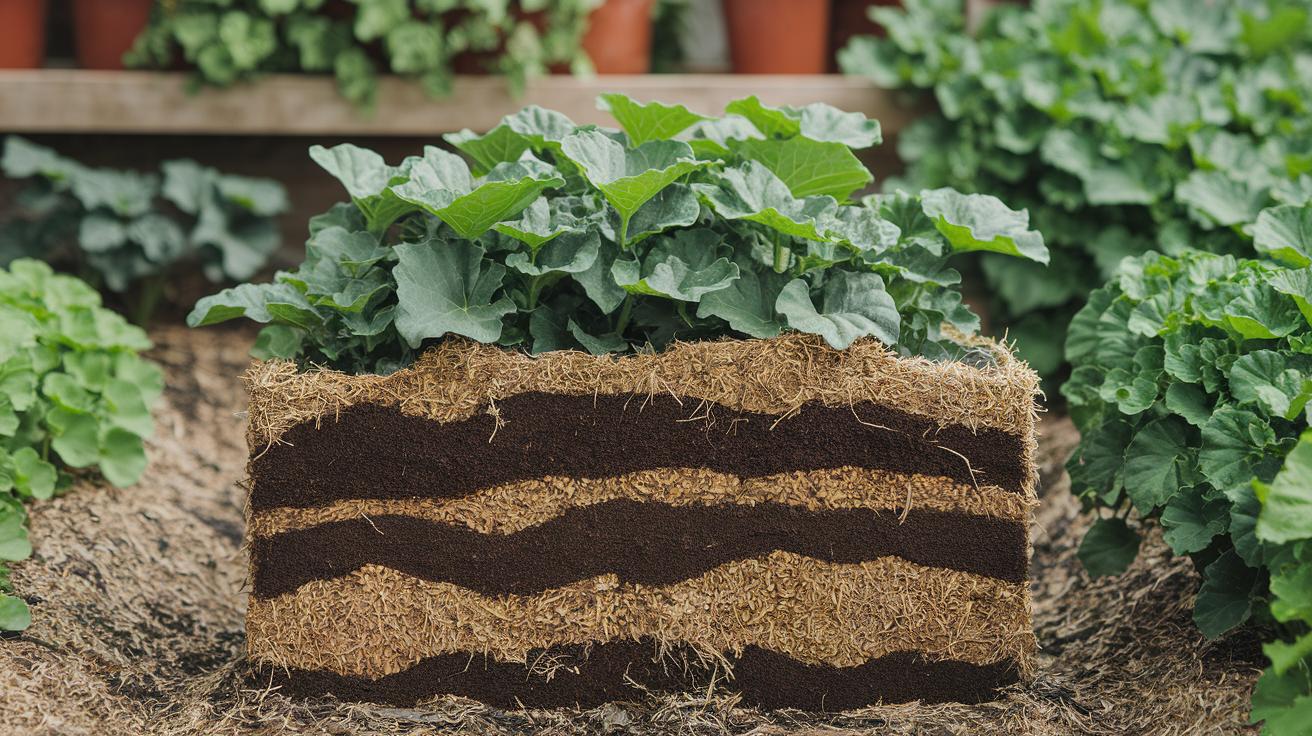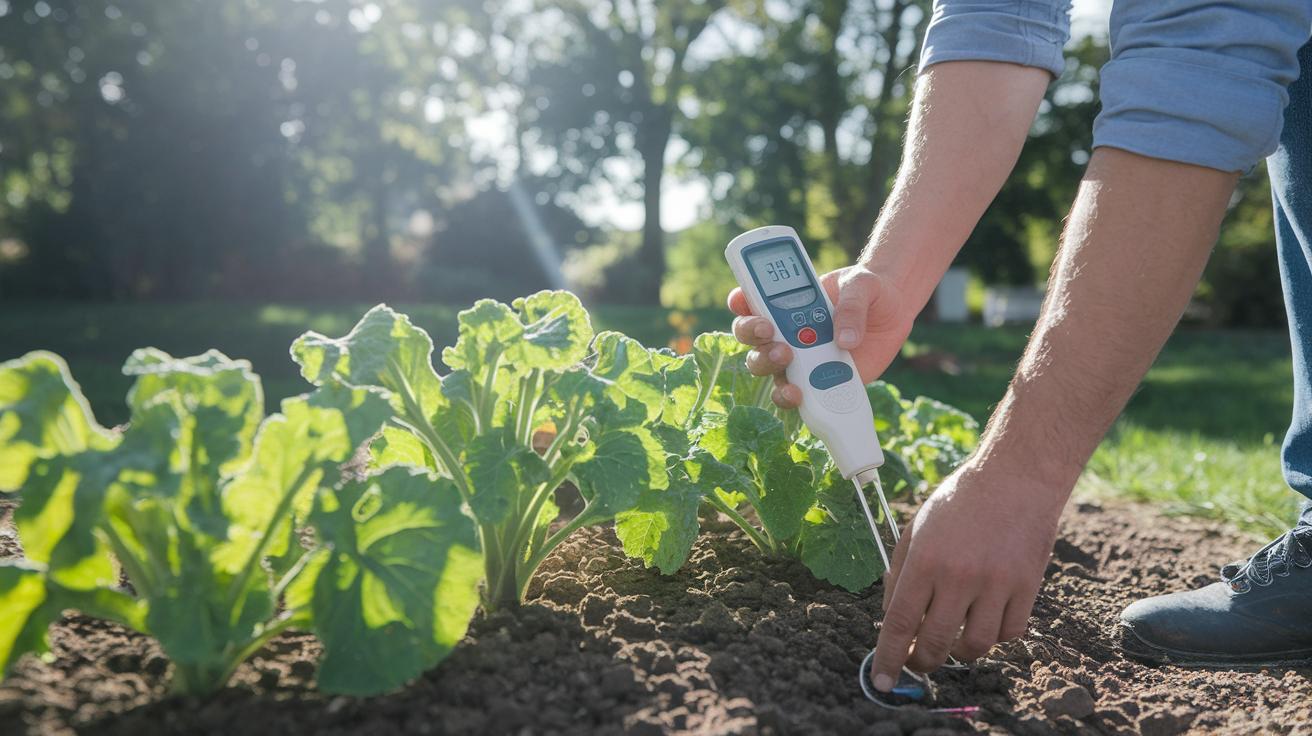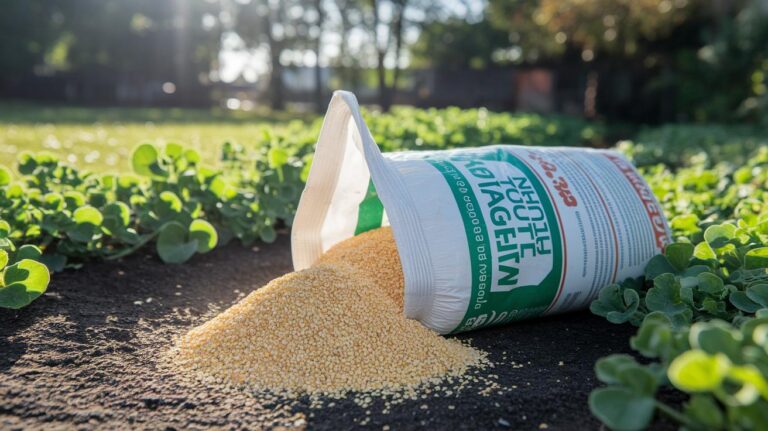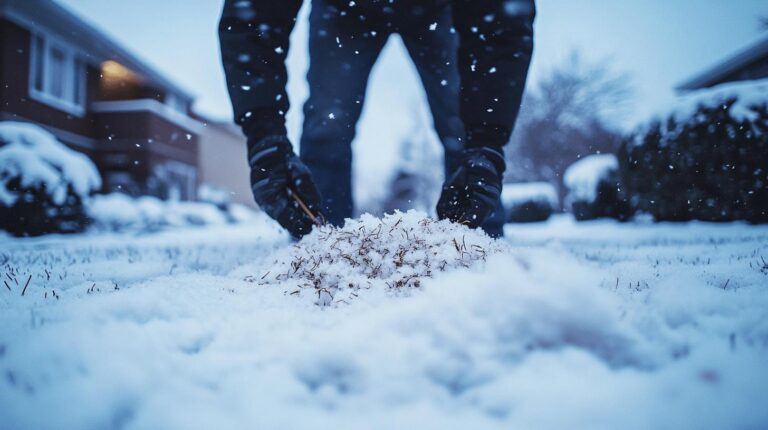How To Adjust Soil PH After Testing Easily
Have you ever noticed your lettuce looking sad and pale, even after a perfect watering? It could be your soil’s pH (a measure of how acidic or alkaline your garden dirt is). Think of it like seasoning soup – too sour or too bland and the flavor just falls flat.
In this post, we’ll walk you through reading a soil test step by step. Then we’ll share a simple plan to nudge pH up or down with garden lime or sulfur (a mineral that lowers pH). You’ll see it’s easier than you might think!
By the end, you’ll feel like a soil whisperer. Your lettuce will pop with bright green leaves and that crisp snap you love. Ready to dig in?
Interpreting pH Test Data and Identifying Amendment Needs
After you test your soil pH (soil acidity-alkalinity level), you’ll see if it sits in the sweet spot of 6.0 to 7.0. If it’s below 6.0, you’ll want to add lime. Above 7.0? Choose sulfur. For easy steps on gathering and testing samples, check out soil pH testing methods for home gardens.
| pH Range | Recommendation |
|---|---|
| Acidic (<6.0) | Add lime |
| Neutral (6.0–7.0) | No change |
| Alkaline (>7.0) | Add sulfur |
Keeping pH between 6.0 and 7.0 matters because nutrients like nitrogen and potassium dissolve best in that range. When pH drifts out, plants can’t grab what they need and might look yellow or wilted. And the friendly microbes (tiny organisms that break down organic matter) love that same zone. Healthy microbes mean fluffy, crumbly soil and stronger roots.
Here’s a quick field guide to get you started:
- Collect soil from a few spots in your plot and mix for a true average.
- Test with a home kit or meter, see soil pH testing methods for home gardens for clear steps.
- Compare your reading to the 6.0–7.0 range.
- Label it acidic, neutral, or alkaline.
- Pick an amendment: lime for acidic soil, sulfur for alkaline soil.
- Sketch out your treatment plan: application rate, timing, and a retest in 3 to 6 months.
Once you know where your soil sits, schedule the amendment before planting. Treating in fall or early spring gives lime or sulfur time to work down into the top 6 to 8 inches of soil before seedlings arrive.
When to Raise Soil pH: Criteria and Material Selection
If your test shows below 6.0, it’s time for lime. Agricultural lime (calcium carbonate) lifts pH slowly and steadily, like a gentle morning breeze. Dolomitic lime also adds magnesium (a nutrient that helps roots grow). Choose dolomitic lime when your soil test shows low magnesium levels.
When to Lower Soil pH: Criteria and Material Selection
A pH above 7.0 means your soil is too alkaline and needs acidifying. Elemental sulfur (pure sulfur powder) works over a few weeks as soil bacteria turn it into sulfuric acid. Aluminum sulfate acts faster but can stress plants if you overapply. Go with elemental sulfur for a steady drop and aluminum sulfate when you need a quick fix.
Calculating Amendment Rates for Precise Soil pH Adjustment Across Soil Types

Think of your soil like a sponge. It soaks up nutrients and won’t shift pH quickly. That stubbornness is called buffer capacity (how much your soil fights pH change). To get your plants thriving, you need the right dose of lime or sulfur.
We measure amendments in pounds per 100 square feet (100 sq ft) of garden.
| Amendment | Soil Texture | Rate per 100 sq ft |
|---|---|---|
| Agricultural lime | Sandy loam | 5 lbs |
| Dolomitic lime | Clay loam | 15 lbs |
| Elemental sulfur (pure form to lower pH) | Any loam | 1–3 lbs |
Here’s a simple formula:
- Multiply your desired pH change (for example, 1 unit)
- × your soil’s buffer factor (about 1 for sandy, up to 3 for clay loam)
- × your garden area in square feet
- ÷ 100
The result is the pounds of amendment you need.
For example, if you want to raise pH by 1 in 200 sq ft of clay loam (buffer factor 3):
1 × 3 × 200 = 600
600 ÷ 100 = 6 lbs of agricultural lime
Got pots or raised beds? First, turn soil volume into an “effective area.”
• Measure your soil volume in cubic feet.
• Divide that by the bed depth in feet.
A 2-foot-deep bed with 50 sq ft of surface holds about 100 cubic feet of soil.
100 cu ft ÷ 2 ft depth = 50 sq ft effective area.
Then plug that 50 sq ft into the same formula.
This handy guide keeps your pH corrections on target, whether you’re tweaking a big veggie patch or fussing over a little herb container.
Application Techniques for Soil pH Corrections
When you’re working on a mid- to large-size bed, a spreader takes the guesswork out. A broadcast spreader flicks crushed lime (mineral that raises soil pH) or garden sulfur (mineral that lowers pH) across the soil in a wide fan. It feels like sprinkling flower petals, but you’ll need to watch for thin spots. Or use a drop spreader to lay the amendment in neat lines along the edges.
Walk at a steady pace, overlap each pass by a few inches. That way you’ll get a smooth, even layer every time. Patchy spots? They’ll be history.
For narrow strips or potted plants, simple hand tools really shine. Scoop a handful of amendment into a handheld spreader or your gloved hand and fan it gently along the row. You can even tilt a garden trowel and let the granules tumble out evenly. Oops, I once dropped a whole scoop on my boots (thankfully the soil didn’t mind a little extra care).
Next comes the mixing step. Use a garden fork or small tiller to blend the top 6 to 8 inches of soil. Think of it like kneading dough until it’s soft and smooth. It breaks up clumps and helps the lime or sulfur reach the roots. If you’re into no-till, just sprinkle the amendment on top, water deeply, and let earthworms and microbes do the work.
Safety and Environmental Considerations

- Put on a sturdy pair of gloves (thick hand coverings that keep scratches away). Then pop on a snug dust mask (it blocks lime dust from sneaking into your lungs). When I snapped mine on, I felt like a backyard superhero, ready to tame that powdery lime.
- After you spread soil amendments (additions like compost (decayed organic matter that enriches soil) that boost nutrients), give the ground a good drink. Watch the water seep in like a sponge soaking up a spill and settle the new goodness into the earth.
- Pick a dry day and level spot to work. Heavy rain or steep slopes can send loose soil running off into the nearest stream, and nobody wants that muddy mess downstream.
How To Adjust Soil PH After Testing Easily
Once you add lime or sulfur (additions that adjust soil acidity), wait three to six months before you test again. I like early winter if I treated in fall. And for spring fix-ups, late summer’s your window.
Jot your test dates and pH readings in a simple chart. That helps you spot shifts long before seedlings arrive. And it makes planning small top-ups a breeze.
As you wait, watch your plants closely. Yellow leaves (called chlorosis when iron gets locked out) can mean your pH is too high. Slow growth or underwhelming harvests often mean roots are begging for nutrients.
Notice blooms dropping early or fruit tasting dull. Those are your garden’s signal flares. And feel the soil, it should crumble between your fingers, not stick like glue.
See earthworm trails weaving through the dirt? That tells you microbes are busy breaking down organic matter (decayed plant bits). Soil life like that helps your plants thrive.
Every test day, write down the date, pH number, weather, and garden thoughts. Note where you spread each amendment and how much you used. Patterns will emerge, maybe one bed needs a top-up faster than the rest.
By the way, add compost (decayed organic matter) each year. It feeds soil microbes and gives worms something yummy. This yearly treat keeps pH near 6.0 to 7.0 and helps plants soak up nutrients just right.
Organic Amendments and Sustainable Soil PH Management Practices

Peat moss (decayed plant material that feels like a soft sponge) soaks up water and gently lowers pH (a measure of how acidic or alkaline soil is). I grab a couple handfuls and fold them into my raised beds or pots. You’ll notice the soil stays moist longer and leans a bit more on the acidic side as the season warms up.
Sprinkle used coffee grounds (the dry bits left after your morning brew) around acid-loving friends like blueberries or tomatoes. Just don’t pile them too thick, think light dusting, not a coffee cake. And if you’re mixing up a container blend, fold in peat moss and coffee bits for a steady, slow pH tweak. Have you ever sniffed fresh grounds in a sunny container? It smells kind of like promise.
Compost (rich, broken-down organic matter that feeds soil life) offers a mild, steady pH shift and builds fluffy soil structure. Spread 2 to 3 inches of finished compost or shredded leaves on garden beds. Then top it all off with pine needle mulch (fallen pine tree leaves) to keep moisture in and acidity swings in check. By fall, earthworms will be throwing a little buffet party underground.
Rotate green manures (plants you grow then dig into the soil for extra nutrients) or cover crops (plants that protect bare soil) like clover, vetch, or rye in any empty spots. When they bloom, chop them at ground level and turn them right into the bed. Their roots and leaves add nitrogen and organic matter, plus they help buffer pH swings. It’s like letting nature’s own compost crew do the work for you.
You can find these organic goodies at your local nursery, farm co-op, or even from your yard waste pile. Mix equal parts compost, pine needles, and shredded leaves in a covered bin. Store it dry so each planting season you’ve got a ready-to-go blend that balances acidity and keeps soil life humming along.
Final Words
In the action, we walked through interpreting your soil pH test, calculating precise amendment rates for sandy and clay soils, and choosing spreaders or no-till methods to apply lime or sulfur. We covered the right timing, safety tips, and how to keep an eye on pH with regular retests. Finally, we explored organic options like compost and cover crops for ongoing care.
Now you’ve got a clear blueprint on how to adjust soil pH after testing and keep your garden thriving. Happy planting!
FAQ
What does soil pH below 6.0 indicate and how do I correct it?
Soil pH below 6.0 indicates acidic soil and needs lime to reach the 6.0–7.0 range for healthy plant growth. Use agricultural lime, or dolomitic lime if you need extra magnesium.
What does soil pH above 7.0 indicate and how do I correct it?
Soil pH above 7.0 indicates alkaline soil and needs sulfur to lower pH into the ideal 6.0–7.0 range. Elemental sulfur works well, and aluminum sulfate can speed changes when needed.
How do I test my garden soil pH at home?
Testing garden soil pH at home involves collecting samples from 6–8 inches deep, mixing them, and using a pH meter or a test kit. You can also send samples to a lab for precise results.
Why is the 6.0–7.0 pH range ideal for most plants?
The 6.0–7.0 pH range matters because most plants absorb nutrients best there. It also supports beneficial microbes and earthworms, leading to healthier growth and improved soil structure.
How do I decide amendment rates for lime or sulfur?
Deciding amendment rates means matching soil texture and desired pH change. Sandy soil needs about 5 lbs of lime per 100 sq ft, clay needs 15 lbs. For sulfur, use 1–3 lbs per 100 sq ft based on texture.
How should I apply pH amendments in my garden?
Applying pH amendments requires spreading them evenly, then working them into the top 6–8 inches of soil with a tiller or fork. For no‐till beds, surface‐apply and water in to let earthworms mix it over time.
When is the best time to apply lime or sulfur safely?
The best time to apply lime or sulfur is in fall or early spring, months before planting, so amendments react fully. Wear gloves and a dust mask, water thoroughly, and avoid heavy rain or steep slopes to reduce runoff.
How often should I retest soil pH and monitor plant health?
Retest soil pH every 3–6 months and watch for yellowing leaves, stunted growth, or poor yields as cues for imbalance. Keep a journal of test dates, application rates, and plant responses to guide future tweaks.
What organic materials can I use to adjust soil pH over time?
Using organic materials like peat moss, pine needles, or coffee grounds adds mild acidity over time. Compost, leaf mulch, and cover crops build structure, buffer pH, and support microbes, making long‐term soil balance easier.







